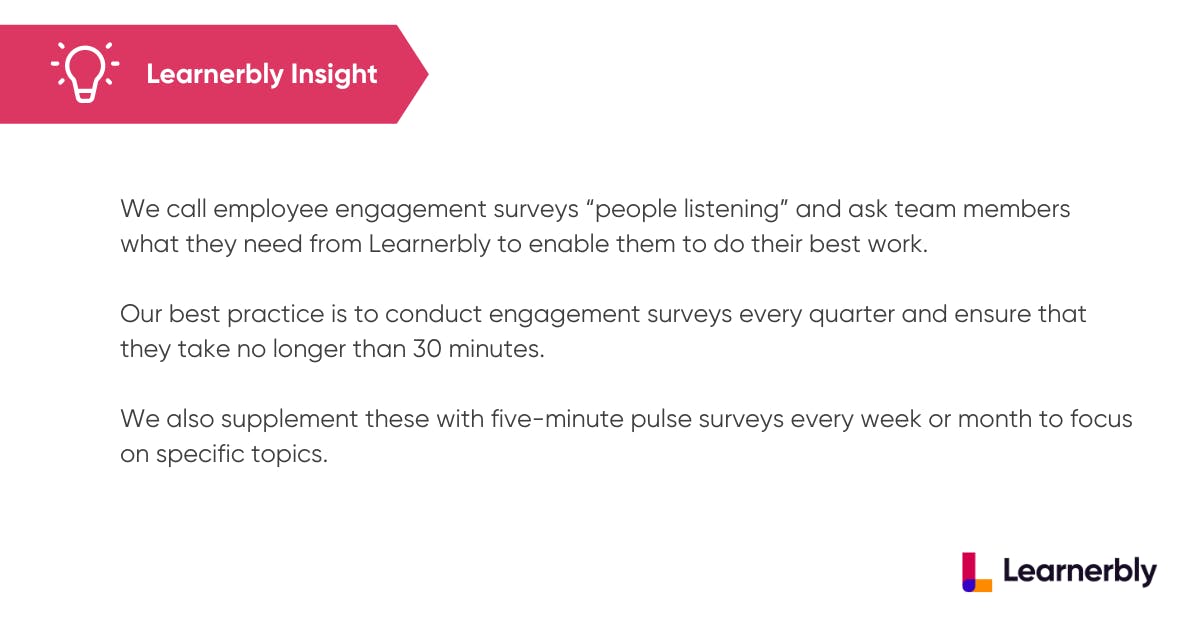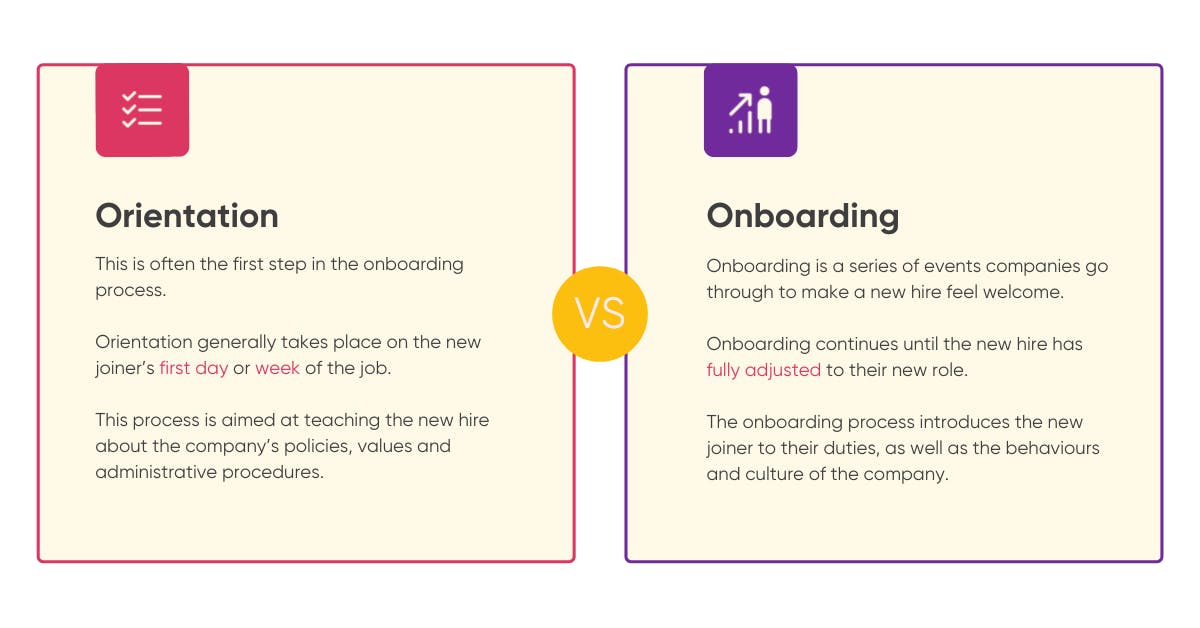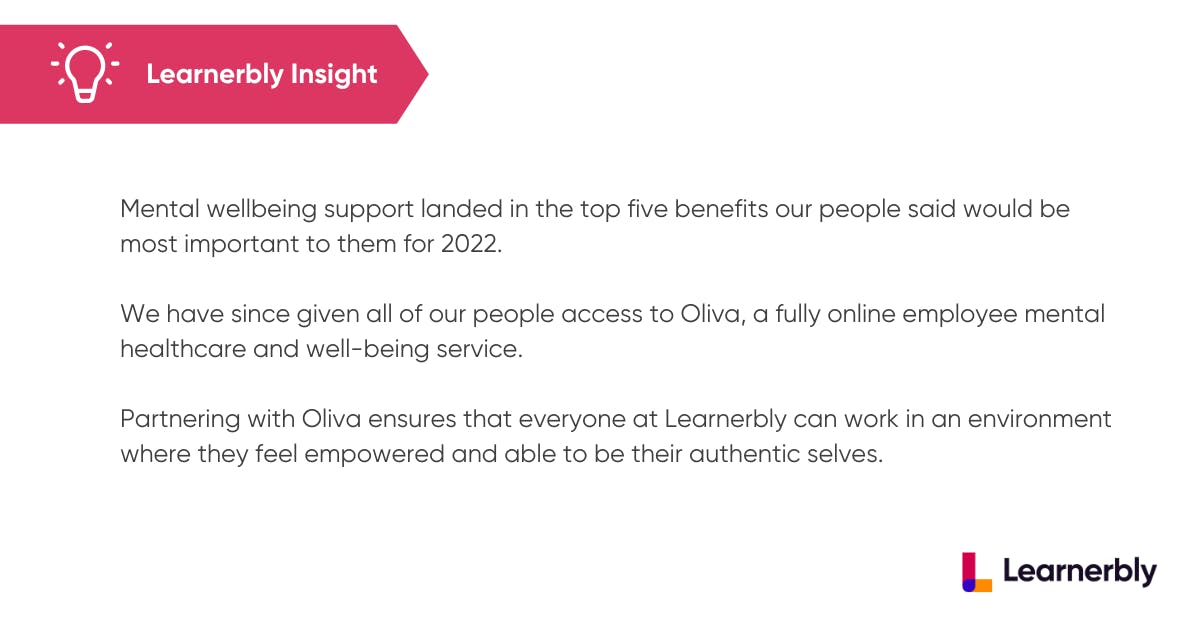Trends
Employee retention: 6 tactics to keep talent longer
Share
About the author

Too many companies are trying to attract too few great people.
An easy way to avoid this problem is to cut down on the number of roles you need to fill in the first place. The more engaged and satisfied your existing people are, the less likely they’ll be to search for fulfilment at other companies. The key to retention lies in evaluating your company’s employee experience. From there, you can make improvements to ensure that your company is one where people feel rewarded, valued and able to grow.
In this article, we take a closer look at what employee retention is, why it’s crucial for all businesses and provide six actionable tips that will help your company hold onto its talent for longer.
Employee Turnover Rates Will Continue to Rise
It wasn’t too long ago that we all stumbled upon ‘The Great Resignation’. This trend saw people leaving their jobs in record numbers at the beginning of 2021. This was especially the case for companies that had poor working environments and unengaged employees. As economies begin to recover from the Covid-19 pandemic, many people managers hoped that high numbers of employee turnover would begin to ease. However, research shows that this trend will continue well into 2022. In fact, a recent survey by Workvivo revealed that 60% of employees plan to leave their jobs in the next 12 months. The labour market continues to be extremely competitive, with 32% of UK employees having at least two other job opportunities to consider. This means that there has never been a better time to focus on improving your employee retention strategies to create a working environment talent will run to, not from.
What Are the Benefits of Improving Employee Retention?
2022 will continue to be a challenging year for companies to attract and retain employees. And with economic upheaval on the horizon, you’ll need your high performers to stick it out with you. Beyond keeping highly skilled people at your organisation, there are several other reasons why employee retention should be your top priority.
- Employee Retention Reduces Future Hiring Costs
The recruitment process is expensive for all businesses. Not only do they need to spend money to find new joiners, but they also need to cover administrative and hiring costs. On average, recruitment can cost between 20-30% of a new hire’s salary. Based on the average salary in the UK, this amounts to about £5,000. Retaining your people is one of the best ways to keep these costs to a minimum. The more fulfilled and engaged employees are, the less likely they will be to look for other job opportunities. This will prevent your company from having to spend more money on recruitment and new hires in the future.

- Your Company Will Cut Down on Knowledge Loss
One of the most expensive costs of high employee turnover is the loss of in-house skills and expertise. People who have worked at your company for a long time will have in-depth knowledge of their responsibilities, as well as how this relates to the organisation’s mission and vision. These valuable members of your team will also be able to pass on their knowledge and expertise to others within the business. This can happen through casual conversations or planned mentoring and upskilling initiatives.
- Retention Improves Team Cohesion and Workplace Morale
It can take companies a long time to build a strong, cohesive team. That’s why it can be so devastating to watch people leave. When a business has a high employee turnover rate, it has to constantly rebuild its team—instead of optimising it to its full potential. So it almost goes without saying that if you’re retaining your people, you won’t have to spend as much time building new connections between teams. Retention allows everyone to feel more connected to their co-workers because they will know more about them the longer they’re there and they’ll know how they work. This results in more effective teamwork across the business, which can boost workplace morale, employee engagement and performance.
- Higher Employee Retention Leads to Increased Productivity
When a new person joins a company, it’s normal for it to take time before they get hang of key processes, as well as their role and responsibilities. Although your experienced team members will help get new joiners up to speed with their new role, it can take away from their day-to-day productivity. When an employee leaves, their work will often get passed on to others in the team. I know firsthand how this can add stress and frustration to a person’s day as they try to do it all. Until the position is filled, this can lead to longer working hours, burnout and a decrease in your team’s productivity. Retaining your people allows them to work more efficiently without worrying about losing key skill sets or taking on too many responsibilities when someone leaves the company.
Six Tactics to Keep Your Company’s Talent Longer
Now that you have a better understanding of why employee retention strategies are essential, let’s take a closer look at how you can keep your company’s talent longer.
#1: Listen to Your People
It’s important to bear in mind that there is no silver bullet when it comes to employee retention. Every company will have different factors driving their people’s turnover. This is why the first step to creating a retention strategy is listening to your people to find out what their concerns are and what drives their engagement.
One of the best ways to do this is through an employee engagement survey. This is a measure of how absorbed your people are in their work, how easily they concentrate on tasks at hand and how readily they can give their best to their jobs. Perhaps most importantly, these surveys allow you to measure what is driving (or dragging) employee satisfaction and engagement. They will help you see where your company needs to make improvements to its employee experience so that your people can be happier and more productive.

By finding out why your people feel a certain way, you’ll be able to:
- Identify specific issues with managers to help them solve their most important people problems
- Find different ways to approach workplace issues
- Enable managers to understand best practices from other teams in the business
One of the key benefits of an employee engagement survey is that they can help identify engagement issues before people start leaving.
#2: Continuously Develop Your Employer Value Proposition (EVP)
A lot of companies think that an EVP is just about attracting and winning talent. It’s not surprising considering 65% of candidates have discontinued a hiring process due to an unattractive EVP. But, it can go a long way in retaining the talent your organisation already has too. There are two key questions you need to ask when thinking about how your organisation’s EVP can help you keep your existing talent longer. These are:
1️⃣ What differentiates our company from every other business we’re competing with?
2️⃣ Why should people stay with us?
However, you can’t answer the questions above or build a compelling EVP without gathering feedback from your people. One way to do this is by conducting exit interviews. These insights are valuable because it allows you to get candid feedback from a departing employee. However, exit interviews often fall short because they don’t help you identify disengaged team members before they leave.
This is where stay interviews come in. These are one-on-one conversations between an employee and their manager, or a member of your company’s people team. Not only do these discussions measure a person’s intent to stay with the organisation, but they can also be used to identify what is driving their engagement.

Here are some ways stay interviews benefit different groups within an organisation:
People Teams:
- Stay interviews help you identify potential retention issues.
- You can improve the people experience with initiatives that address recurring issues.
Employees:
- Stay interviews give people an opportunity to express what is driving—or inhibiting—their engagement and job satisfaction.
- It provides the employee with a safe space to suggest ways their overall experience could be improved.
- These discussions show employees that the company values their feedback and cares about their experience.
After conducting stay interviews, you can leverage the insights to improve your EVP for talent attraction as well as retention. Good feedback from existing employees can even be put on your social media or careers page as a way to set you apart from other businesses.
#3: Create an Engaging Onboarding Initiative
The best employee retention strategies start with an engaging onboarding initiative. This is because onboarding is the very first impression a business makes on a newcomer, beyond the hiring process. The support you offer the newcomer during their first few weeks (in person or virtually) will set the tone for the rest of their experience at your company. Many businesses make the mistake of treating onboarding the same as orientation. Let’s take a closer look at their key differences.
There are several key benefits to an engaging and effective onboarding initiative. Not only does it help new hires reach productivity faster, but it also helps them to feel more prepared for their role and connect with their co-workers. When new employees feel empowered and excited about their role, it leads to long-term engagement, job satisfaction and retention. In fact, effective onboarding initiatives have been proven to increase employee retention by 50%. This is because it shows the new hire that the company is committed to helping them get set up for success and cares about their experience at the organisation. However, if your company’s onboarding process leaves newcomers feeling alienated or unsure of what’s expected of them, they will be more likely to abandon their roles early on.

#4: Let Your People Work in Their Own Way
Companies around the world are shooting themselves in the foot by holding onto pre-pandemic working models. It’s time for employers to trade a location-centric model of work for a human-centric one, characterised by flexibility and empathy. This approach will also be crucial for employee retention going forward.
A study by EY shows that 54% of surveyed employees would consider leaving their jobs post-pandemic if they are not given some freedom about when and where they work. There is also research to suggest that people actually thrive when given flexibility.
Gartner’s EVP Employee Survey reveals that the number of people defined as high-performing increases by 40% when companies adopt a more flexible approach. The same survey also shows that when people are allowed to work in their own way, they feel more empowered, become more productive and feel more engaged.
For remote working to be effective, it requires companies to have a culture of trust. It also means that employers need to start focusing on work outcomes, rather than activity metrics.
Below we have provided some tips on how you can enable your people to do their best work, wherever that might be.
✨ Practical Tips from Learnerbly:
Tip #1: Accept that your people’s expectations of traditional work models will continue to change. This means that you need to keep up to date with the latest research and thought leadership, as well as what other companies are doing. Staying informed about the latest work trends will help your company stay agile and continuously develop an EVP that will attract and retain talent.
Tip #2: Help employees identify the activities in each role that can be done under flexible work arrangements. This will give your people more autonomy over when and where they work on a daily basis. Giving your people more control over their work will help them feel more empowered, engaged and committed to your company.

Tip #3: It’s important to remember that a remote or hybrid working model won’t work unless your people are provided with the right technology. The right software will also boost your employee retention efforts. This is because it ensures that everyone can do their jobs productively and helps teams collaborate, whether it’s remotely or in person.
#5: Help Your People Establish a Work-Life Balance
Although competitive compensation and benefits are still important factors to consider in your EVP, a company’s wellbeing offerings have become a top priority for job seekers.
Research published by PwC shows that professional development and work-life balance are more important to millennials than financial rewards. And a survey by Deloitte revealed that 40% of millennials and Gen Zs felt that their employers did a poor job of supporting their mental wellbeing during the pandemic.
For companies looking to attract and retain talent, it has become crucial to provide people with wellbeing benefits to promote a healthy work-life balance. However, you first need to establish psychological safety at your company. Simply put, psychological safety is when people do not fear punishment for making and admitting mistakes, asking for help or sharing different ideas. If your managers or your people don’t feel like they can come to you or each other with concerns or struggles, you won’t be able to help them manage their wellbeing. Once you’ve embedded this within your company culture, you’ll still need to keep your finger on the pulse and continually gauge where your managers and teams are at mentally.

When people feel like employers value wellbeing, it allows them to feel more understood, invested and autonomous. If you place this at the centre of your company’s EVP and culture, job seekers will see your company as a place that values its people’s experience and satisfaction. Prioritising employee wellbeing will also help you retain existing talent. This is because when people feel cared for and safe, they will be far less likely to give up what they have at your company.

#6: Provide Opportunities for Personal and Professional Growth
One of the main reasons why people leave their jobs is because they feel like they have better chances of growth elsewhere. This trend will also have implications for your company’s ability to attract talent going forward. In the PWC study mentioned earlier, 65% of millennials said that the opportunity for personal development was the main reason why they accepted their current job. If people are accepting jobs for learning opportunities, you can bet they’ll stay at companies that offer them too.
Start with a Learning Culture
Before you can implement a learning and development (L&D) function at your company, you first need to foster a learning culture. A learning culture is where the members of a company actively learn, encourage others to learn and share their knowledge. Often, putting the frameworks in place for learning to occur doesn’t always mean that people will engage with it. A learning culture will help your company see more L&D permanency, as well as organic and genuine engagement.
L&D and Employee Retention
It’s widely known that an effective L&D programme boosts employee retention. One study by Deloitte found that companies with a strong L&D culture have retention rates 30-50% higher than those without one. This is because an organisation that helps its people expand their skill sets means working with a company that helps people build their futures. Workplace learning gives people the knowledge and skills they need for career progression and reaching their ideal role. It shows your people that you care about them and their unique contributions, not just the revenue they can generate for your company. When people work in environments that bring them joy and make their lives more meaningful, it encourages them to stay longer.

Wrapping Up
As we’ve seen in this article, 2022 will see the second wave of the Great Resignation. However, it’s not all doom and gloom. This can be an opportunity for employers to put strategies in place to improve their employee experience and retention strategies. This help you stand apart from your hiring competitors and enable you to create a working environment people run to, not from.